Countless Cultures
Members of the BV community share experiences of being apart of multiple backgrounds
Ethnicity, or one’s cultural identity, plays a key role in forming each person’s unique set of traditions and experiences. This role can become even more amplified for people who consider themselves to be multicultural, meaning they enjoy the customs of — and simultaneously face the challenges of — more than one cultural group.
The “melting pot” of ethnicities for which America is known, and out of which the idea of multiculturality stems, is evident here in the Blue Valley District — roughly one-third of all students enrolled are minorities, and the same is true for just over 20% of the students attending Blue Valley High.
This complex blend of cultures and different perspectives pushed district board members to alter the history curriculum by offering AP World History instead of AP European History starting this year to ensure every student is represented.
As initiatives like these grow in number and continuously strive for inclusivity, we look into the individual, day-to-day lives of members of our BV community who consider themselves multicultural and examine how this aspect of their identity has influenced the people they are today.
Jule’ahna Hayes-Nigro
With an Italian father and a Native-African-American mother, senior Jule’ahna Hayes-Nigro is a fourth generation immigrant juggling her different identities.
On her mother’s side, Hayes-Nigro is still in the process of learning about her Cherokee-Choctaw ancestry.
“Before my grandma moved to Arizona, we went through all these old books,” Hayes-Nigro said. “[We thought] all those books must have been gone because my mom’s side of the family moved a lot. When we [found it], there were a lot of missing parts to it — we had to look online. [We’re] seeing from their family tree who we are [and] where we came from.”
Since finding out about her Native ancestry, Hayes-Nigro has connected with other students who are part of the “huge” tribe.
“[I found out another] one of our students [is] Cherokee as well,” Hayes-Nigro said. “It’s very interesting to find those things and [be] like, ‘Oh my goodness. Are you serious?’”
Despite her being Native-American, Hayes-Nigro is occasionally confused for other ethnicities.
“Many people think I’m Hispanic just because I have that Native American in me,” she said. “At work this guy thought I was Hispanic, and he [told me], ‘I bought these jalapeños just for you.’”
Although there are challenges, Hayes-Nigro feels proud of her Native heritage.
“There’s always going to be a win because I know my ancestors were here first on the Native American side,” she said.
As for her Italian half, Hayes-Nigro’s father is from Sicily. The family’s Italian culture is shown in their culinary practices.
“My grandma said [the way] to a man’s heart is his stomach,” she said. “We don’t buy anything that’s pre-made. We always make everything by our hands, so it’s traditional ways of what my Noni taught us.”
An elegant appearance is also part of Italian culture for Hayes-Nigro.
“[My Noni] always makes sure us kids look sharp,” she said. “We have nothing on [our] fingernails [and] wash [our] hands thoroughly.”
Additionally, Hayes-Nigro keeps in touch with the local Italian community “all the time.”
“It’s just a cool feeling when you go to an Italian festival like, ‘Oh my gosh. There’s so many Italians.’ They all know me for some reason,” Hayes-Nigro said. “We always go to authentic Italian delis.”
Although less in tune with her African roots, Hayes-Nigro’s mother still makes special dishes characterized by their association with African American culture in the South.
“My mom makes really good greens with cabbage, a ton of water and fried bacon in there,” Hayes-Nigro said. “It’s so delicious, [along with her] sweet potato pie.”
Hayes-Nigro also recognizes the big difference between being African versus being African-American.
“The difference between those two is that [with] Africans from Africa, the whole continent kept their culture,” Hayes-Nigro said. “They didn’t get it taken away.”
She is hopeful that future technological advancements will allow her to understand where in Africa her ancestors were from.
“We will find out where we specifically came from, what tribe we came from, what our culture was like and all those details that will help us move forward,” she said.
Overall, she is content with her ethnic and racial identity.
“Right now I’m just loving who I am,” Hayes-Nigro said. “I’m glad I’m a colored person with multiple races.”
Dr. Shah

When you live in America but come from a different culture, it’s important to embrace your background and stay true to your ethnicity. For chemistry teacher Dr. Neerav Shah, this ideal means more to him than anything.
Although Shah was born and raised in America, he considers himself fully Indian because both his parents immigrated from India. He loves his culture for the reason that it is different from anything in American culture.
“The thing I focus on the most about my ethnicity and Indian heritage are the differences more than the similarities,” Shah said.
There are several holidays and traditions in Indian culture not practiced in America. Shah described a tradition dealing with the brother-sister relationship, and how it is one of the most important holidays in India. He wears a bracelet to symbolize the significance of his relationship with his sister.
“My sister gave me this bracelet as a sign, and I keep it on until it falls off,” Shah said. “It’s my job to protect my sister, and there’s nothing like that in American culture.”
Having a different ethnicity can be very rewarding, but it can also lead to uncomfortable situations. People with different ethnicities face prejudice and often have to fight to prove themselves equal.
“I definitely remember right after 9/11 happened, that, just because of my skin color — more than people knowing what my ethnicity was — I was singled out a lot,” he said. “[I’d have been] waiting at a restaurant, and I [would] have gotten there before other people, but other people are seated before [me]. Those things just kind of happen sometimes — you know the reason.”
Many people with different ethnicities love educating others about their culture, and for Shah, sharing this information means so much more when people seem interested in his background.
“I don’t like forcing my culture on somebody else, but I’ve had students who ask me, ‘Hey, why are you wearing this?’ and I love sharing what it means,” Shah said. “These things I celebrate are core to me and core to my beliefs, so they’re things that are part of me.”
Having a different ethnicity has its ups and downs, but for the most part, it is something people enjoy and are proud of. Shah believes there is a significance in his differences and is glad to be able to show a side of him that not many people have the opportunity to see.
“I’m different than everybody else around me, and I like celebrating the fact that I don’t look like anybody else,” Shah said. “I don’t have the same background as anybody else around here. I think that’s important.”
Jude Mubaslat

Blue Valley has an array of cultures. Senior Jude Mubaslat defines multiculturality for her as “you’re able to have two cultures in a way to cross upon each other, which also means introducing people from one culture to another.”
Mubaslat said she has encountered difficulties as a multicultural student.
“I’ve had a lot of people assume I can’t do things,” she said. “It’s really wrong for people to assume that.”
Mubaslat feels as though multicultural students have an advantage.
“I think a lot of people underestimate what we can do,” she said.
Mubaslat believes there are benefits of identifying as multicultural.
“[They’re able to have] more than one experience and more than one culture to look at,” she said. “Having this perspective of life that other people aren’t going to have [is beneficial] because they don’t share that aspect.”
Mubaslat said she doesn’t experience all of the same struggles as others who are multicultural.
“I personally don’t have a language barrier,” she said. “I speak both English and Arabic and am able to do both really well. I feel like multicultural people have that advantage of having more than one thing to go to.”
Mubaslat said her relationship with her extended family is going well.
“We are all really close,” she said. “When it comes to my aunts and uncles, we always make sure we get together on holidays, we make sure we are calling each other every single week and I call my grandparents every single day.”
Mubaslat sees her family relatively often.
“Over summer, we always go to Jordan and stay with them for as long as we can to make sure that we’re keeping that bond,” she said.
She said she has not lost connection with her culture.
“My parents, aunts and uncles —they’ve always done a really good job of making sure that we knew where we were from,” she said.
Mubaslat feels she is in tune with many aspects of her culture.
“I always make sure I’m incorporating it into what I am doing,” she said. “We cook the food at home. We go to parties and a lot of my friends will do the dances and listen to the music. I try to be in touch with it as much as I can.”
She said during class discussions, multicultural students will speak up to share their perspective, yet there is still work to be done.
“That’s pretty cool, but I think overall as a school the impact could be bigger,” she said. “When you’re in a class, in a moment, you’re discussing with people, it’s just amazing to see another perspectives come into the conversation.”
Mrs. Wiedel
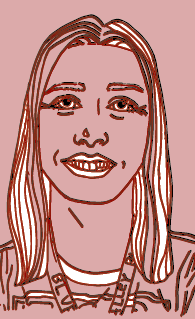
The Blue Valley diversity committee is devoted to spreading the word and educating others about topics such as multi-ethnic individuals, diverse cultures, and social justice. Chemistry teacher Manal Wiedel is the sponsor of the Diversity Club and a BV District Diversity Committee member.
Here at BV, multi-ethnic individuals shape the culture of our school. That mix of culture and ethnicity provides a glimpse of the real world outside of the “JOCO Bubble.”
“Whoever allows themselves to be exposed to someone different from them — whether that identity is ethnicity, whether that identity is a sexual orientation, whatever that identifying marker is — it shapes this fostering of acceptance, awareness, and knowledge [at BV],” Wiedel said.
As someone who has had the personal stories of multi-ethnic individuals shared with her, Wiedel said those individuals not only relished in their diversity but struggled with it — whether it’s feeling it through their education, socializing or how they’re being treated by others through unkind words, microaggressions or even discrimination.
“Our [school’s] demographic [now] is significantly different from when I entered the district,” Wiedel said.
Issues in the past and to this day that face multicultural individuals include a lack of knowledge, experience and exposure.
“Adults only know what they know, and students only know what they know,” Wiedel said. “There is an eagerness and a willingness to want to know more, but initially those difficulties happen because a student doesn’t feel seen or heard by a peer, an adult or anyone [who] they would have that experience with.”
For Wiedel, celebrating diversity and mulitethnic students is a goal for BV that should be consistently happening.
“One thing we’ve always battled is how do we celebrate diversity every day?” she said. “How do we make this important all the time and not just during Black History Month — the diversity assembly, for example — not just during a specific instance. How do we embed and foster the importance of this topic into our everyday lives?’’
Wiedel said it’s difficult to push a message or force this “want” onto others. A challenge that must be faced is not everyone wanting the celebration and acceptance of diversity the way it should be received because we can’t control how people will hear or feel about something.
“At the end of the day, no one wants to just be tolerated, but I think the fact that a [student] could say, ‘Oh my gosh, I attended a meeting and was able to listen to someone experience this,’ feeds into [a] cycle,” Wiedel said. “It feeds into social-emotional learning, it feeds into feeling aware of your surroundings, and that feeds into being a global citizen. The more we can do to create that, the more it improves our school culture.”
Dario Salas
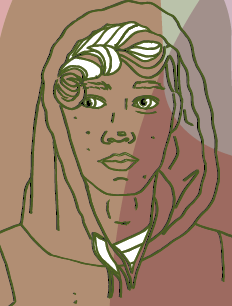
For sophomore Dario Salas, being from a different country — Cuba — and being immersed in a different culture from many people at the school has proved to be both beneficial and difficult.
“At first, [it was hard] because I didn’t know anybody,” Salas said. “It’s gotten easier as I’ve gotten to know people, but some people made fun of me at the beginning. They’re like, ‘Oh, you’re cute. Get out of here, whatever,’ things like that. Now, I’d say it’s pretty good. I mean, it’s easier to get jobs because I can speak two languages — so that’s a plus.”
Spanish and English aren’t the only two languages Salas and some of his family members have learned.
“[My family] actually speaks multiple languages, but where I’m from we only speak Spanish,” Salas said. “My parents, like my mom, for example, she speaks Spanish, English, French [and] Russian, and [she] understands Chinese.”
Their extended family still lives in Cuba, and Salas’s family helps them out from the States.
“We have to send money to my family in Cuba constantly; I have grandparents, but if we were to not send money from the U.S. to Cuba, they would have died years ago,” Salas said. “There’s no food in the stores, there’s no internet, there’s no money — there’s nothing, absolutely nothing. The government controls absolutely everything, and its own power of the whole country, you speak against the government [and] they literally kill you with an AK.”
While living in the U.S., Salas has been able to stay in touch with various aspects of his culture.
“I like the music — the music is a big aspect of the Cuban culture,” Salas said. “It has such a unique style to it, but it’s also popular in a sense because the artists known in Cuba are really big here, too.”
Despite moving four years ago, Salas still experiences difficulties living in a different country.
“I have not been in touch with the culture as much like school, my friends, what the trend [in] Cuba is,” Salas said. “Cuba is like a completely different planet right now, I wouldn’t even want to be in Cuba because of how bad it is. The biggest thing I’ve lost from being Cuban and then coming to the U.S. is probably the languages because I don’t get to talk as much.”
Salas believes having different cultures and ethnicities mixing in society is vital in order to expand an understanding of various lifestyles.
“Diversity is amazing — diversity is necessary,” Salas said. “If you have multiple ethnicities or multiple people from multiple places, it makes [the] environment a lot nicer because of all of the different possibilities there [are]. If you were to just have a room completely [full] of Americans, it wouldn’t be the same as having a room full of people from Canada and people from China. Every person from somewhere else is going to be unique in their own way.”
Mrs. Cowan

In many ways, visualizing race, identity and change is about difference. These differences are confided through categories, languages and segmentations. The implicit sortings go on through our heads in terms of the way we label others and more so ourselves.
Having both Irish and Scottish-American characteristics, teacher Molly Cowan explains her challenges despite being an American citizen.
“I was born and raised here,” she said. “I know language barriers are a big one. Having traveled to other countries, if you can’t read the language, it’s scary.”
Regardless of adapting to new surroundings, Cowan believes students should grow up with diverse groups.
“I had a good experience when I was in high school because I had a lot of friends from different cultural backgrounds,” Cowan said. “I appreciate that it gives me a wide variety of perspectives from different people, which I liked.”
Cowan describes her feelings toward ethnicity and how it can alter society’s view of individuals.
“If you identify with more than one ethnicity, you get the benefit of being able to see things from different perspectives,” she said. “I was talking to a kid yesterday and he’s like, ‘Yeah, I look pretty white [despite being mixed].’ It all depends on which parent he’s with and how he’s perceived.”
Within the school, Cowan said mixed ethnicities and cultures shape the community at Blue Valley.
“Added diversity allows people to get a better understanding and build empathy,” Cowan said. “When you are friends with somebody and they’re experiencing things, you see it firsthand when you’re with them. It gives you a better understanding of the day-to-day experience of some people of color.”
While living in America, Cowan accepts it is important for people to undergo different aspects of their culture.
“I’ve had haggis before,” Cowan said. “It’s not something I make at home. You say, ‘Yeah, I’m eating sheeps’ intestines’ [and] people are like, ‘Oh my God, gross.’ How do you know you [never] had it? [Also] I love to bagpipe. It’s fun. It’s weird.”
From learning her cultural background, Cowan gives advice to multicultural students.
“Don’t forget your heritage — that’s what makes America really cool,” she said. “You’ve got a wide variety of cultures and people. Who doesn’t like to experience other cultures?”

Allie Crawford is a Junior and is excited for her first year of being a staff writer. In school, Allie is involved in Chorale and show choir. She loves...
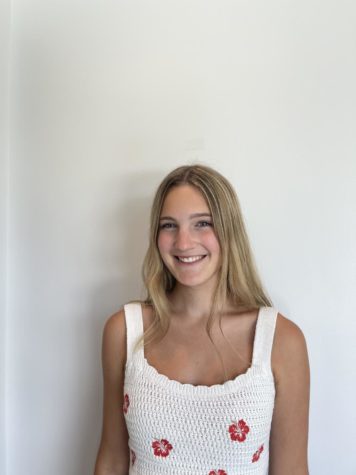
Brynn Friesen is a senior and is Web Editor of the newspaper. This is her fourth year on staff. She is also co President of the choir department. Brynn...

Stephanie Kontopanos is a senior and the assistant editor of The Tiger Print. This is her third year on staff and her second year being the Newspaper Grandma...
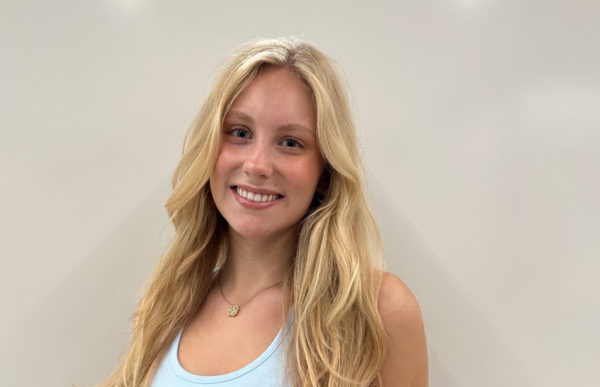
Ava McGuire is the Editor-in-Chief for The Tiger Print. This is her senior year and her third year on staff. Fun fact: Ava has lived in many places throughout...
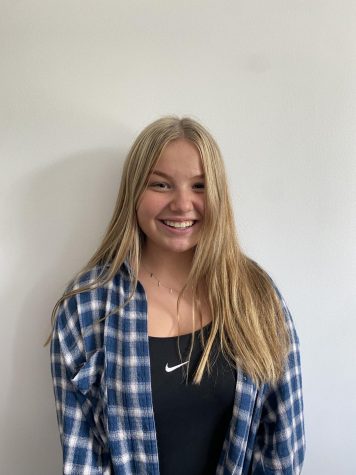
Elle Moulder is a sophomore and this is her first year on staff. She is currently a student at the University of Alabama Early College. She wants to...
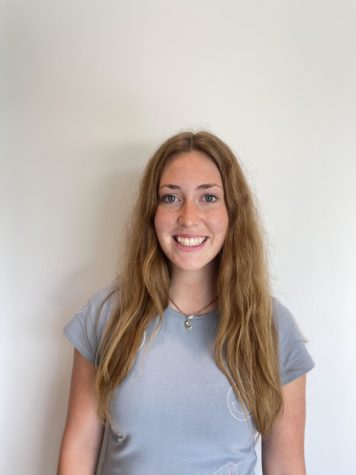
Charley Thomas is a senior and serves as Editor-in-Chief of the Tiger Print this year. At BV, she is a member of the Varsity Volleyball Team, Student Council,...
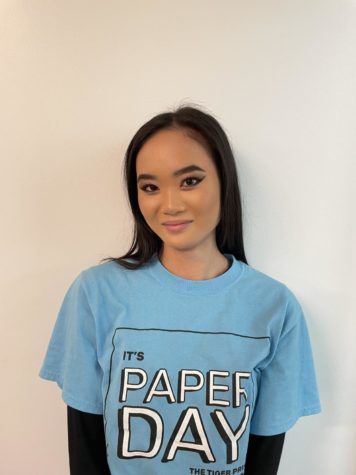
Mena Walker is a senior and this is her second year on staff. In school, she’s involved in NHS, Varsity Tennis, Galley Club, and Book Club. She is...




